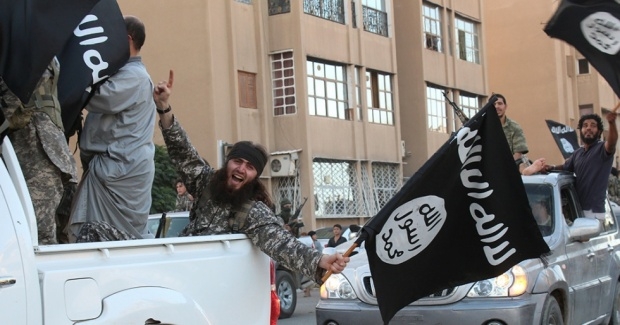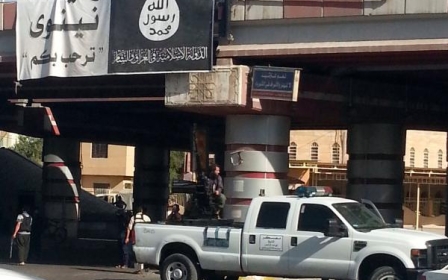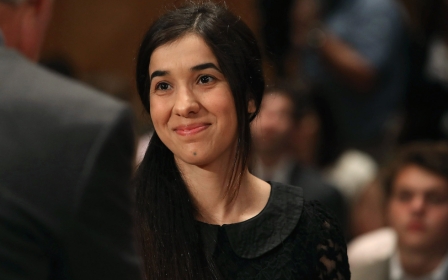The Islamic State and the media: A symbiotic relationship

It is often said that a symbiotic relationship exists between terrorism and the media. Where terrorism needs the commercial media to communicate its message to either its target or broader audience, commercial media come to depend on the ratings boost often gained by reporting acts of spectacular terrorist violence.
US television journalist Ted Koppel once remarked that a news cycle absent terrorism “would not deprive television of all interesting things in the world, but one of the most interesting things, nevertheless”.
For Western media outlets, the Islamic State group has been the gift that keeps on giving. Its acts of extraordinary violence, spectacular pyrotechnics, and choreographed brutality guarantee ratings, pageviews and clicks.
In many ways, the media have played a major role in creating the monster that is IS. It now has a responsibility to drive the final nail into its coffin. But with IS on the ropes, facing a 100,000 strong coalition force in Mosul, Iraq, the question is: will it?
First, let’s unpack how IS (nee al-Qaeda in Iraq) has used the media to help achieve its goals, and how the media have used IS to realise its overarching objective: profit.
In 2006, at the height of the insurgency against Coalition forces in Iraq, Ayman al-Zawahiri, the then-deputy leader of al-Qaeda, proclaimed that “al-Qaeda is in a battle, and more than half of this battle is taking place in the battlefield of the media”.
Without the media, terrorism would be, as many have described, like the proverbial tree that falls in the forest. Today, the self-declared Islamic State is just as dependent on media coverage to spread its message, attract new recruits, instill fear in its enemies, and provide the caliphate with a sense of state-like legitimacy.
To that end, IS spends millions of dollars to produce highly choreographed acts of brutality and violence as a means to achieve its overall aims, cognizant of the fact the media find packaged acts of violence all too irresistible to ignore.
It’s important to remember violence and counter-violence between the Iraqi central government forces and Sunni militias was an ongoing feature of Iraq from the date of US withdrawal in 2011 through 2014, but it was only when IS carefully stage-managed the execution of US journalist James Foley did Western media pay attention to the continuing sectarian conflict in Iraq.
The subsequent beheadings of other journalists and aid workers brought IS a sudden global media audience. From late 2014, news networks brought round-the-clock coverage of anything and everything IS did, which helped the group meet its continuing needs: audience, recruitment, scare tactics, and legitimacy. When Western political leaders described IS as a “nihilistic, death cult,” they not only elevated the terrorist-insurgency group but also helped IS instill even more fear in their actual and future rivals.
From the date of James Foley’s beheading in 2014 through the entire following year, the number of foreign recruits traveling to Iraq and Syria to join IS grew exponentially, with National Security Agency Director James Clapper telling Congress that IS’ total headcount grew from 15,000 to more than 30,000 during this 12-month period.
But in terms of capability, territory held, and headcount, the situation today looks nothing like the end of 2014 for the terror group. In recent months, IS has given up Ramadi, Tikrit, Fallujah, and in all likelihood is about to lose its last remaining footprint in Iraq (Mosul). In every sense of the phrase, IS has been badly defeated in the past year, but you’d never know this if you depended on mainstream Western media outlets for your news.
The media helped build up IS during its infancy; it now must help tear it down during its demise.
The media’s disinterest in any narrative that portrays, accurately, IS on the verge of total defeat allows political leaders to mislead Western audiences, and by extension future would-be IS recruits, into believing the terror group continues to expand and flourish.
During the second US presidential debate, candidate Donald Trump declared, “ISIS has us playing defense.” Wait, what? If this were at all true, explain how IS leaders are fleeing Mosul for their lives? Explain how reports emerging out of Mosul confirm IS leader al-Baghdadi is not only facing assassination attempts but also what can only be defined as a coup. Call me old-fashioned, but coups and assassination plots are hardly the hallmark of a quasi-state in control of its own destiny.
By every imaginable metric, IS is staring its ultimate demise in the face. Life and survival is so desperate for the caliphate that many of its fighters are faced with two options: blow themselves up or attempt to flee Mosul dressed as a woman.
Were IS a truly formidable foe, coalition forces would be faced with an enemy that would be, by any definition, considered a conventional force, but the caliphate’s last stand in Iraq looks very much like the Japanese army’s ultimately futile defence of Iwo Jima – replete with the same kind of booby traps, suicide missions, and improvised explosive devices.
For the past year or so, we have been told the mission to retake Mosul would take months, but Iraqi coalition forces have already liberated more than 80 villages in the area during the past five days alone. While it’s a given that resistance will become fiercer and more desperate as fighting moves closer to the inner rings of the city, this is a fight that is now expected to last weeks rather than months, which again underscores how much the media have overinflated the insurgency’s capabilities.
Hassan Hassan, author of ISIS: Inside the Army of Terror, expects IS to retreat into the desert following its soon-to-be-expected loss of Mosul, in order to prepare for a comeback, “just as they did between 2007 and 2013”. Whereas Michael Knights, a scholar at the Washington Institute for Near East Policy, predicts IS will return to being a “Mafia-type network” in and around Mosul, assassinating and intimidating “people who have control of financial resources, like the people running the gold markets or mobile-telephone operators or the people running the real estate department in the city”.
This is the reality Western media need to portray to its audiences. Instead of portraying IS as an existential threat to Western civilization or fixating on the group’s barbarity, the media now have a responsibility to accurately portray what and who the group really is: a desperate bunch of criminal misfits, whose doom is assured, even as they seek shelter in almost uninhabitable terrain in the northern deserts of Iraq.
By choosing to portray the reality of IS’ demise over IS-driven sensationalism, the media have an opportunity to refute the group’s message, thus denying it new recruits the ability to instill fear in its enemies, and any sense of legitimacy.
The media helped build up IS during its infancy; they now must help tear it down during its demise.
- CJ Werleman is the author of Crucifying America, God Hates You. Hate Him Back, Koran Curious, and is the host of Foreign Object. Follow him on twitter: @cjwerleman
The views expressed in this article belong to the author and do not necessarily reflect the editorial policy of Middle East Eye.
Photo: Islamic State militants in Raqqa, Syria (AFP)
This article is available in French on Middle East Eye French edition.
Middle East Eye propose une couverture et une analyse indépendantes et incomparables du Moyen-Orient, de l’Afrique du Nord et d’autres régions du monde. Pour en savoir plus sur la reprise de ce contenu et les frais qui s’appliquent, veuillez remplir ce formulaire [en anglais]. Pour en savoir plus sur MEE, cliquez ici [en anglais].





